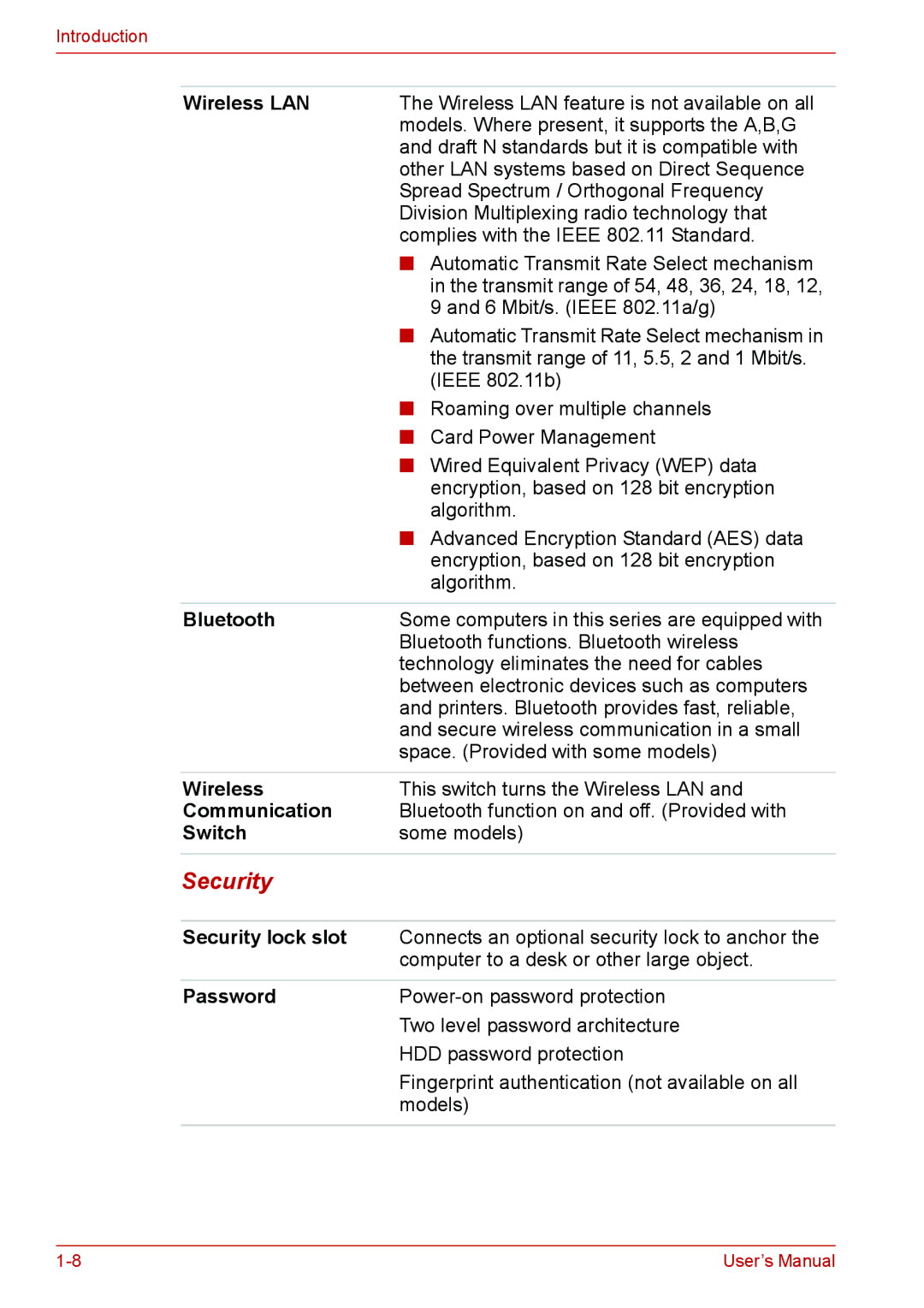
Introduction
Wireless LAN | The Wireless LAN feature is not available on all |
| models. Where present, it supports the A,B,G |
| and draft N standards but it is compatible with |
| other LAN systems based on Direct Sequence |
| Spread Spectrum / Orthogonal Frequency |
| Division Multiplexing radio technology that |
| complies with the IEEE 802.11 Standard. |
| ■ Automatic Transmit Rate Select mechanism |
| in the transmit range of 54, 48, 36, 24, 18, 12, |
| 9 and 6 Mbit/s. (IEEE 802.11a/g) |
| ■ Automatic Transmit Rate Select mechanism in |
| the transmit range of 11, 5.5, 2 and 1 Mbit/s. |
| (IEEE 802.11b) |
| ■ Roaming over multiple channels |
| ■ Card Power Management |
| ■ Wired Equivalent Privacy (WEP) data |
| encryption, based on 128 bit encryption |
| algorithm. |
| ■ Advanced Encryption Standard (AES) data |
| encryption, based on 128 bit encryption |
| algorithm. |
|
|
Bluetooth | Some computers in this series are equipped with |
| Bluetooth functions. Bluetooth wireless |
| technology eliminates the need for cables |
| between electronic devices such as computers |
| and printers. Bluetooth provides fast, reliable, |
| and secure wireless communication in a small |
| space. (Provided with some models) |
|
|
Wireless | This switch turns the Wireless LAN and |
Communication | Bluetooth function on and off. (Provided with |
Switch | some models) |
|
|
Security |
|
|
|
Security lock slot | Connects an optional security lock to anchor the |
| computer to a desk or other large object. |
|
|
Password | |
| Two level password architecture |
| HDD password protection |
| Fingerprint authentication (not available on all |
| models) |
|
|
User’s Manual |
